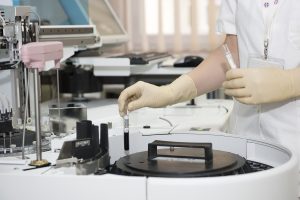
The development of novel concepts is essential to advancement in the complex field of laboratory plant equipment.
1. Synthesis Schemes’ Fundamentals in Laboratory Plant Equipment
A. Innovation Blueprint
Synthesis strategies are used as a guide while building laboratory plant apparatus. They encompass the design, components, and procedures needed to produce the complex equipment that supports scientific investigation in a range of fields.
B. Converting Concepts into Actualities
Synthesis schemes are essential for converting theoretical concepts into concrete realities in the laboratory setting, where accuracy and functionality are critical. These models aid researchers, engineers, and designers in the methodical development of intricate machinery.
2. State-of-the-Art Synthesis Scheme Technologies
A. Additive Manufacturing and Three-D Printing
Cutting-edge technologies are frequently included into modern synthesis techniques, with additive manufacturing and 3D printing leading the way. These technologies transform manufacturing by making it possible to precisely create complex components that have never been possible before.
B. Accurate Computational Modelling
The accuracy of synthesis schemes is improved by the application of computer modelling. Virtual simulations made possible by sophisticated software guarantee that, even before actual production starts, every part of the equipment complies with the specified design and functionality.
3. Flexibility and Customisation in Design
A. Fitting Equipment to Particular Research Requirements
Synthesis systems enable labs to modify equipment according to particular research requirements. Optimising equipment for a variety of scientific purposes is crucial, whether it is a bioreactor for cell growth or a reactor for chemical synthesis.
B. Adaptable Modular Architectures
Modern synthesis systems are characterised by modular designs that promote adaptability. Equipment configurations can be changed by researchers to meet changing research needs without requiring major overhauls.
4. Environmental Factors to Be Considered in Synthesis Plans
A. Eco-Friendly Materials and Methods
Synthesis designs are increasingly prioritising the use of environmentally friendly materials and processes due to the increased emphasis on sustainability. Labs use energy-efficient manufacturing techniques and recyclable materials in an effort to lessen their impact on the environment.
B. Evaluations of the Life Cycle
Life cycle analyses are incorporated into synthesis methods to determine how laboratory plant equipment affects the environment. This comprehensive approach informs decisions on sustainable design and manufacture by taking into account the equipment’s whole life cycle, from the extraction of raw materials to their disposal.
5. Teamwork and Multidisciplinary Methods
A. Overcoming Disciplinary Divides
Cooperation is essential in the synthesis of laboratory plant equipment. Interdisciplinary teams of specialists in engineering, chemistry, biology, and other domains are frequently involved in synthesis schemes. This cooperative strategy guarantees that the apparatus satisfies the many requirements of scientific investigation.
B. Institutional-Industrial Collaborations
Collaborations between academic institutions and business enhance the synthesis process even more. Practical considerations are informed by industry knowledge, while creative concepts are contributed by academic experience, resulting in equipment that is both cutting-edge and useful for everyday applications.
6. Safety and Quality Control Procedures
A. Strict Testing Procedures
Strict testing processes are mandated by synthesis schemes before laboratory plant equipment is put into service. By doing this, the equipment’s performance, accuracy, and safety are guaranteed to satisfy industry requirements.
B. Adherence to Regulatory Guidelines
Synthesis schemes include components to guarantee adherence to legal requirements. Following safety and quality standards is crucial for any industry, including biotechnology, chemistry, and pharmaceuticals.
In conclusion: Developing the Future of Equipment for Laboratory Plants
To sum up, synthesis schemes For laboratory plant equipment are the masterminds behind advancements in the field of laboratory plant machinery. The future of scientific research is shaped by these programmes, which include a dedication to sustainability and the integration of cutting-edge technologies. With innovation and teamwork driving laboratory evolution, the synthesis of sophisticated schemes guarantees that the apparatus underpinning groundbreaking discoveries stays at the cutting edge of scientific excellence.
FAQs
Why are synthesis schemes crucial for equipment used in laboratory plants?
Synthesis schemes guarantee accuracy and functionality in scientific research by acting as blueprints for the design and manufacture of laboratory plant equipment.
Which innovative technologies are included in synthesis schemes?
Additive manufacturing, 3D printing, computational modelling, and the fusion of smart technologies like AI and IoT are examples of cutting-edge technology.
What role do synthesis programmes have in maintaining a sustainable environment?
Synthesis schemes aim to reduce the environmental impact of laboratory plant equipment by giving priority to sustainable materials, procedures, and life cycle assessments.
Why is cooperation crucial to the creation of lab plant machinery?
Collaboration ensures that equipment fulfils a variety of research demands by bringing together interdisciplinary teams and merging experience from academia and industry.
For More Info :
https://echemhub.com/tag/synthesis-schemes/

